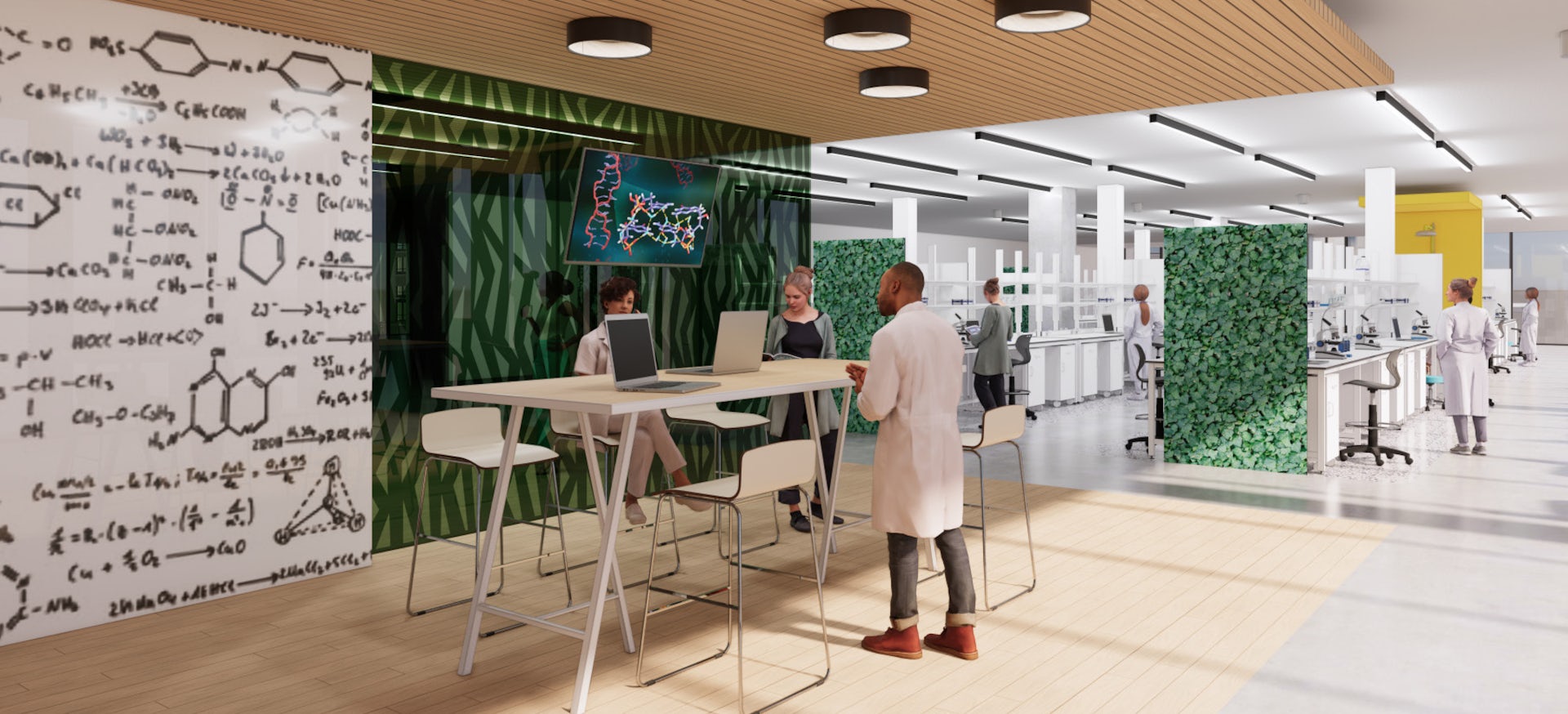For Lab Manager magazine, LPA Director of Laboratory Planning Isabel Mandujano and Rachel Nasland, research analyst for LPAred, LPA’s research, explored different strategies for developing laboratory facilities that support basic human needs and encourage productivity. (They also hosted a Webinar on the topic for Lab Manager, which can be found here.)
Safety and workflow efficiency are frequently the first priorities in the design of a laboratory facility. Given the rigor and systematic processes that science requires, the humanistic aspect of the scientist is often neglected. However, the recent climate and the pandemic have brought to the forefront the importance of incorporating health and wellness, inclusive design, and a vibrant culture to attract and retain the best talent. If workers are not provided with a comfortable environment that fulfills basic human needs, then regardless of the rewards and recognition, they will be dissatisfied with their environment and unlikely to be at their most productive.
There are a host of challenges to improving working conditions in controlled scientific environments, but the benefits are well worth the effort. Scientific workplaces designed to satisfy each tier of Maslow’s hierarchy of needs (physiological, safety, love/belonging, esteem, and self-actualization) can increase employee well-being, improve company culture, and facilitate scientific innovation, discovery, and exploration. Ultimately, it results in better outcomes for the people that work in the space, their work, and the community as a whole.
Just as humans are motivated to fulfill their needs in a hierarchical order, moving from the most basic need to more advanced needs, we have identified five ways scientific facility design can help improve the workplace experience from a holistic, humanistic perspective.














